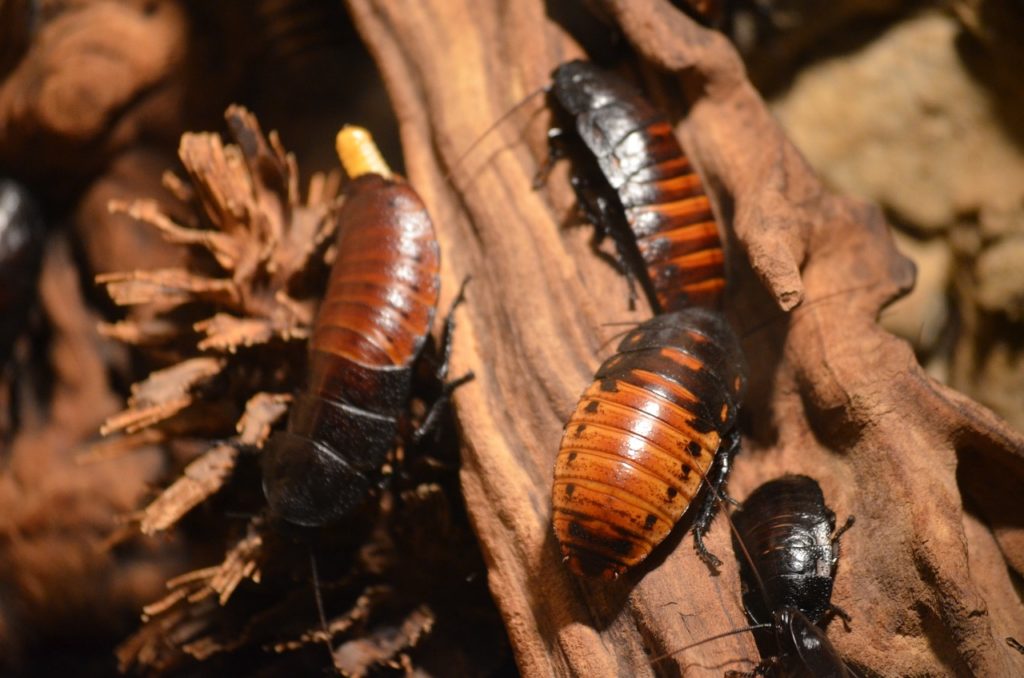Table of Contents
You’ve probably had this experience before; you see a small, brownish insect scurrying across your counter or floor, and your heart leaps to your throat. “Is that a baby roach?” you wonder, feeling a mixture of disgust and dread. However, you should know that there are many bugs that look like baby roaches, and some of them are rather harmless.
In this article, we’ll explore seven Nebraska bugs that look like baby roaches. We’ll also discuss why it’s important to identify bugs correctly and provide some tips for managing these creepy crawlies in your home. By the end of this article, you’ll be able to distinguish between a baby roach and its common look-alikes.
Bugs That Look Like Baby Roaches
Proper insect identification is crucial for several reasons. First, it helps you determine what kind of pest problem you’re dealing with. Some insects, like roaches, can carry harmful germs and cause damage to your home. Others, like springtails, are mostly harmless and don’t require professional extermination.
Second, knowing what kind of bug you’re dealing with can save you time, money, and frustration. Using the wrong insecticides or methods to eliminate a particular bug can be ineffective and even dangerous. Finally, correct identification helps you take the appropriate steps to prevent future infestations.
Check out our list of the top 7 types of bugs that look like baby roaches in Nebraska’s Lincoln and Douglas Counties!
Bug #1: Springtails
Springtails are tiny, wingless insects that are often mistaken for baby roaches due to their brown or black color and size (typically 1-2 mm long). However, springtails have a distinctive, forked tail-like appendage called a furcula that allows them to jump short distances.
These insects feed on decaying plant material, fungi, and algae and are typically found in damp, humid areas, such as bathrooms, basements, and around potted plants. Springtails do not bite or sting and pose no danger to humans or pets. To prevent their presence in your home, reduce moisture levels and remove any decaying organic matter.
Bug #2: Booklice
Booklice, also known as psocids, are another bug that can be mistaken for baby roaches. These tiny insects are usually pale in color, ranging from translucent white to light brown, and measure about 1-2 mm in length. They have elongated bodies and may or may not have wings, depending on the species.
Booklice are commonly found in damp, humid environments, feeding on mold, fungi, and the glue used in book bindings or wallpaper. Though they don’t pose any health risks, booklice can be a nuisance and cause damage to paper products. To prevent booklice infestations, keep humidity levels low and store books and paper materials in dry, well-ventilated areas.
Bug #3: Carpet Beetles
Carpet beetles are another type of insect that are often mistaken for baby roaches due to their size and brown or black coloration. However, carpet beetles have a more rounded, oval shape and distinct, patterned markings on their wings. Adult carpet beetles range in size from 2-5 mm in length.
Carpet beetle larvae are the most problematic stage of the insect, as they feed on natural fibers, including wool, silk, and fur, causing damage to carpets, clothing, and other textiles. To prevent carpet beetle infestations, clean and vacuum regularly, store clothing in sealed containers, and inspect secondhand items for signs of the insects.
Bug #4: Woodlice
Woodlice, also known as pillbugs or sowbugs, are small, grayish-brown crustaceans that are often mistaken for baby roaches. They have a distinctive, segmented, oval-shaped body, and measure about 5-15 mm in length. Woodlice are typically found in damp, dark areas, such as under rocks, logs, and in basements.
These creatures feed on decaying plant matter and help break down organic material in the environment. Although they may be a nuisance when found indoors, woodlice do not bite, sting, or transmit diseases. To prevent woodlice from entering your home, seal cracks and gaps in your foundation and eliminate damp, dark hiding places.
Bug #5: Small Spiders
Small spiders, such as the common house spider, are other bugs that look like baby roaches. However, spiders have eight legs and two distinct body parts, while roaches have six legs and a more elongated body.
Spiders are generally beneficial creatures, as they feed on other insects and help keep pest populations in check. However, if their presence is unwanted, you can prevent them by sealing cracks and gaps in your home’s exterior, removing clutter, and maintaining a clean living space.
Bug #6: Earwigs
Earwigs are other bugs that look like cockroaches. These slender, brownish insects measure about 6-25 mm in length and have a pair of pincer-like appendages at the end of their abdomen. Despite their intimidating appearance, earwigs are generally harmless and do not sting or bite humans.
Earwigs are attracted to moist, dark places and can often be found under rocks, logs, and in damp basements. To prevent earwigs from entering your home, eliminate damp, dark hiding spots, and seal any cracks or gaps in your home’s exterior.
Bug #7: Silverfish
Silverfish are small, wingless insects that are often mistaken for small cockroaches. They have a distinctive, teardrop-shaped body, covered in silvery-gray scales, and measure about 12-19 mm in length. Silverfish are nocturnal creatures and are attracted to dark, damp environments.
These insects feed on carbohydrates, such as starches, sugars, and cellulose, and can cause damage to paper materials, including books, wallpaper, and stored food. To prevent silverfish infestations, keep humidity levels low, store food in airtight containers, and remove clutter that can provide hiding places.
Curious about how other pests measure up to roaches? Check out our blog “Cricket vs Roach: A Primer in Pest Identification” for more information!
Tips for Managing Bugs in Your Home
Now that you know about the different bugs that look like baby roaches, here are some general tips for managing these pests in your Douglas or Lincoln County home:

- Maintain a clean and clutter-free living space to eliminate potential food sources and hiding places for insects.
- Keep humidity levels low by using dehumidifiers or air conditioners, and fix any plumbing leaks or other sources of moisture.
- Seal any cracks, gaps, or holes in your home’s exterior to prevent insects from entering.
- Regularly inspect your home for signs of infestations, such as damaged materials, fecal matter, or shed insect skins.
- If you’re unsure about the type of bug you’ve discovered or need assistance with pest control, consult a professional exterminator.
Properly Identifying Bugs That Look Like Cockroaches in Douglas and Lincoln County
Being able to correctly identify bugs that look like baby roaches is essential for managing pest issues in your home. Not only does it help you determine the appropriate course of action, but it also saves you time, money, and frustration in the long run. With the knowledge you’ve gained from this article, you can confidently distinguish between baby roaches and their common look-alikes and take the necessary steps to keep your home pest-free.
For all your pest removal needs, contact RECON Pest Services today at 402-683-7809 or our online form!





